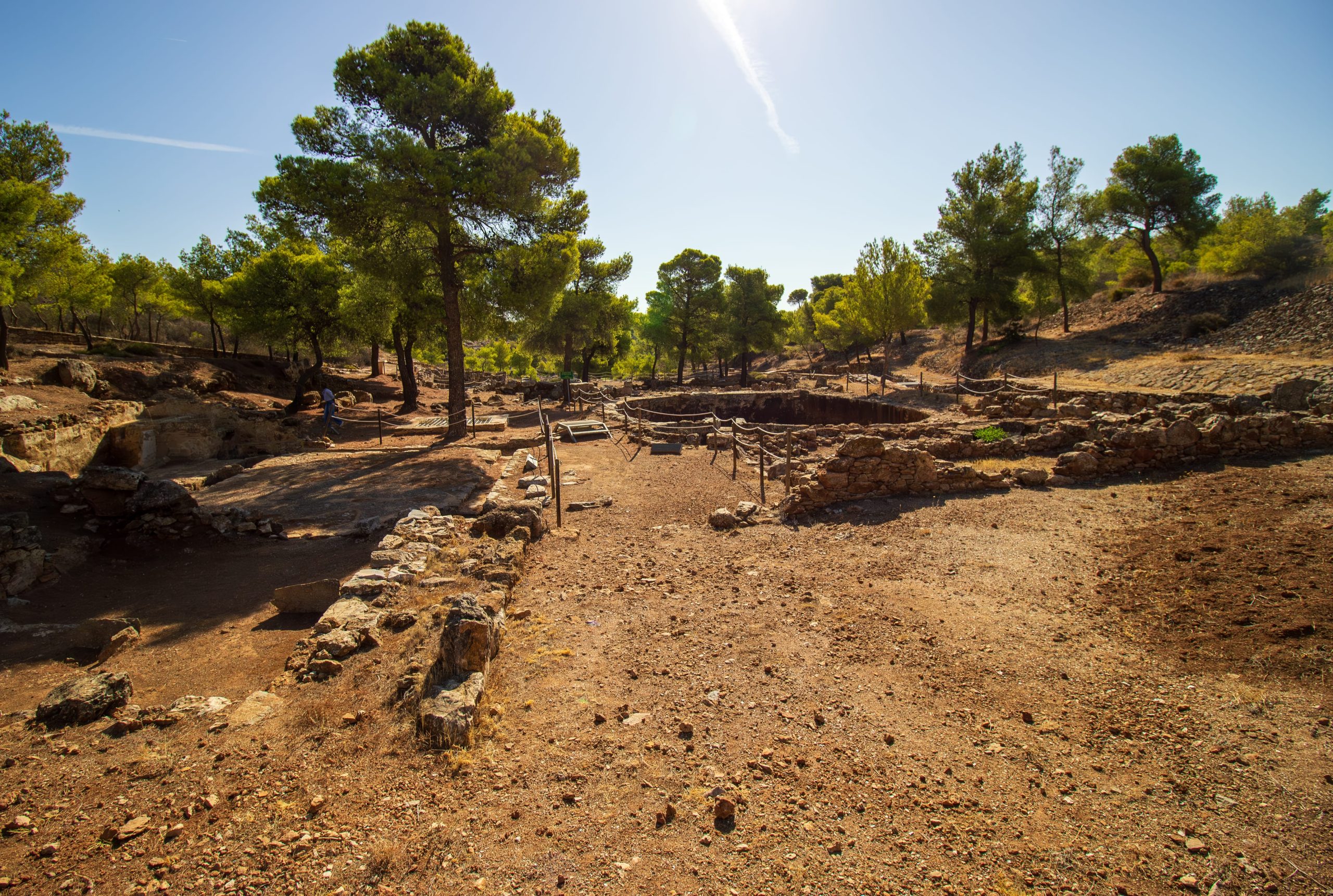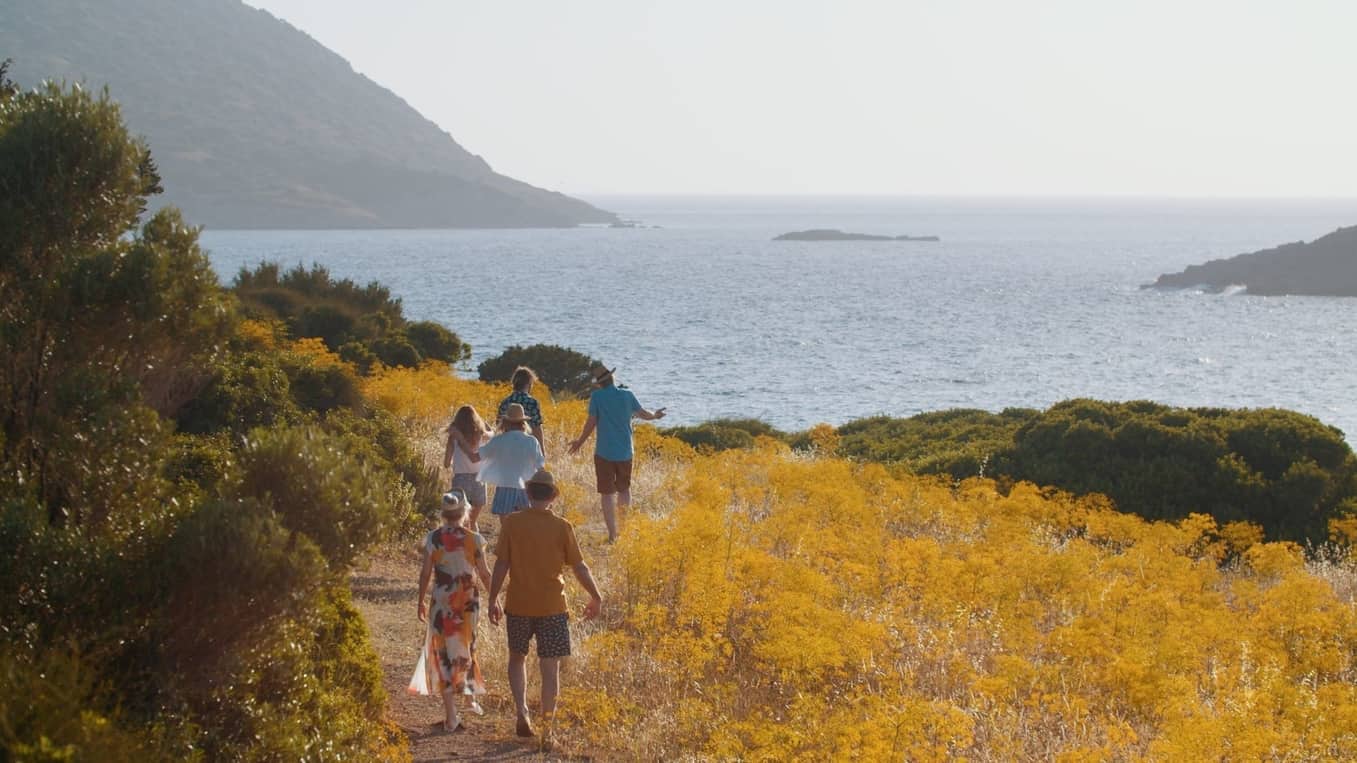Sanctuary of Poseidon and Sanctuary of Athena at Sounion
Sanctuary of Poseidon and Sanctuary of Athena at Sounion
The sanctuaries of Poseidon and Athena are two of the most important monuments of the archaeological site of Sounio. Cape Sounion, at the southernmost tip of Attica, is an important strategic point. Through this peninsula, the city-state (polis) of Athens controlled the sea passage to the Aegean Sea and Piraeus, its central port, as well as the Lavrion peninsula with its rich silver mines, which played an important role in the rise of Athens as a leading power in the 5th century BC.
Inside the fortress, at the highest point, is the sanctuary of Poseidon. The entrance to the fortress was through the north-west gate of the wall and the ascent to the sanctuary was through the settlement that covered the slopes. Nowadays visitors have to cross the eastern part of the wall to enter the fortress. The harbour was located in the sandy bay to the north of the promontory. On the rocky shore at the entrance to the bay was the area of the dockyards (neosikoi), where warships were sheltered. The sanctuary of Athena stands on the top of a low hill about 400m north-east of the sanctuary of Poseidon.
THE SANCTUARY OF POSEIDON
Homer testifies to the sanctity of the area from at least the 8th century BC. In the Archaic period (7th-6th centuries BC) the sanctuary flourished, although it was not monumental. A large number of votive objects were found buried in depots that had been collected after the destruction of the sanctuary by the Persians in 480 BC. At the end of the archaic period, construction began on a monumental limestone temple, which was destroyed by the Persians before it was completed. The temple was rebuilt on the foundations of the previous one around 444-440 BC. During the Classical and Hellenistic periods (5th-2nd centuries BC) the sanctuary was frequently visited. A great festival was organized every four years and officials sailed there in a sacred ship, as in the sanctuary on the island of Delos. With the decline of Greek religion, the sanctuary was abandoned and the temple gradually fell into disrepair.
The sacred precinct of Poseidon, which occupies the highest part of the fortress, is surrounded by a wall, except for its steep southern side, and covers an area of about 5000 square metres. It was entered through a monumental gate to the north-east. The most important building is the Temple of Poseidon, in the southern part, while the NW part is occupied by the large northern portico and the smaller western one.
The present Doric temple was built on the ruins of the archaic temple using local marble from the Agrileza quarries. Palmette antefixes crowned the gabled roof. At least the eastern pediment (on the entrance side) was decorated with statues. On the same side, a relief frieze ran along the top of the interior colonnade. The Parian marble frieze panels depict scenes from the Battle of the Centaurs and the deeds of Theseus, an allegory of the victory of the Greeks, led by the Athenians, over the Persians and the superiority of Athenian democracy over the Eastern monarchy. The temple is attributed to the same architect as those of Hephaistos (“Thission”) in the Athenian Agora, Ares in Acharnes and Nemesis in Ramnous.
THE SANCTUARY OF ATHENA AT SOUNION
The top of a low hill about 400 m to the NE of the sanctuary of Poseidon is occupied by the sanctuary of Athena. A trapezoid enclosure of limestone (about 46.50X44 m) runs around the flattened top of the hill and defines the sanctuary with the temple of Athena, the small temple and the depositor. To the north is an older sanctuary called the “Phrontis”. The temples of the sanctuary were deconstructed, as usually practiced in the roman period with the abandoned temples in the periphery, and transported to adorn the Athenian Agora.
In the temple of Athena, the cella was bordered by a colonnade only on the east and south sides. The marble columns were not fluted and had Ionic capitals. At the back of the cella, the foundations of the base of the cult statue have been preserved. The altar is located to the south of the temple, apparently because the large plateau to the south was suitable for the gathering of worshippers and the offering of sacrifices. The temple was built around the middle of the 5th century BC. According to another view, it predated the Persian wars and only the exterior colonnades were added.
The small temple (4.96X6.80 m) is located at the NE consisting of a cella with two columns in the front. At the back, the base for the cult statue is made of grey marble from Eleusis. The altar is opposite the main facade. The temple was probably dedicated to the goddess Artemis. It dates from the archaic period (600-500 BC) and was destroyed by the Persians (480 BC). Another theory is that it was built at the same time as or later than the great temple of Athena.
The depositor
In the SE area of the sanctuary there is a wide trench, 15 m deep, accessible by 15 hewn steps. Its original use remains unclear. Later, probably after the Persian Wars, the ancient offerings were deposited in it. They date from the 9th to the middle of the 5th century BC, when the trench was covered.
The precinct of “Phrontis”
In the NW part, an almost circular wall of roughly hewn large stones defines a precinct older than that of Athena. In the precinct, apparently a sacred grove, a hero was worshipped, probably Phrontis, the helmsman of Menelaus’ ship on the return from Troy to Sparta, who died and was buried at Sounion (Odyssey, c. 276-285). The ancient precinct and the depot with the oldest finds are evidence of a very ancient cult that began in the area of the sanctuary of Athena.









